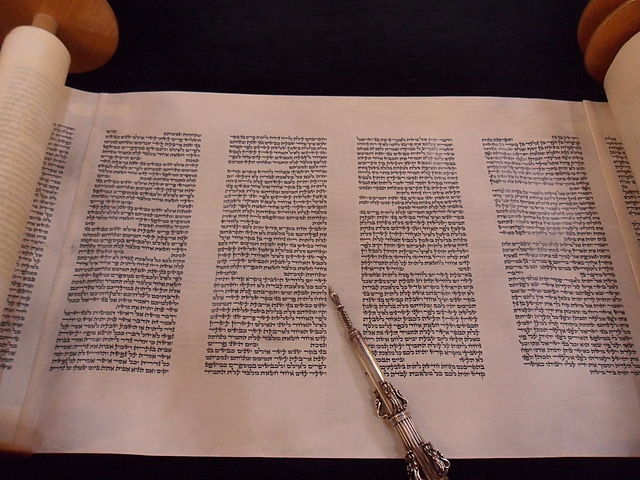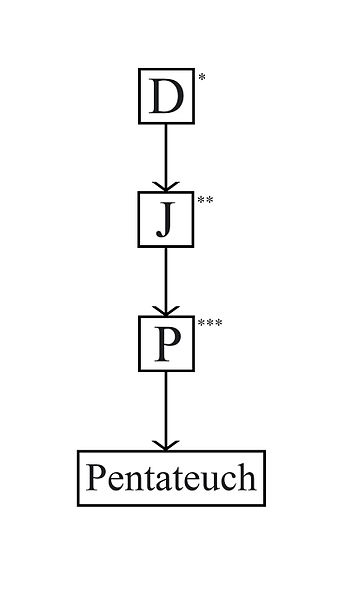The Book of Leviticus is the third book of the Torah and of the Old Testament, also known as the Third Book of Moses. Many hypotheses presented by scholars as to its origins agree that it developed over a long period of time, reaching its present form during the Persian Period, from 538 to 332 BC, although this is disputed.
4Q120, a Greek manuscript of Leviticus from the 1st century BCE
Vaikro – Book of Leviticus, Warsaw edition, 1860, page 1
The Tabernacle and the Camp (19th-century drawing)
The Scapegoat (1854 painting by William Holman Hunt)
The Torah is the compilation of the first five books of the Hebrew Bible, namely the books of Genesis, Exodus, Leviticus, Numbers and Deuteronomy. The Torah is known as the Pentateuch or the Five Books of Moses by Christians. It is also known as the Written Torah in Rabbinical Jewish tradition. If meant for liturgic purposes, it takes the form of a Torah scroll. If in bound book form, it is called Chumash, and is usually printed with the rabbinic commentaries.
An opened Torah scroll (Book of Genesis part).
Reading pointers, or yad, to ensure more ordinal reading of the Torah.
An opened Torah scroll (Book of Numbers part), and a reading pointer (yad).
The supplementary hypothesis, one potential successor to the documentary hypothesis.








